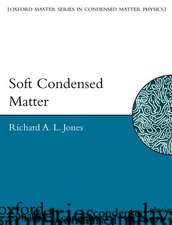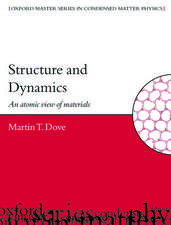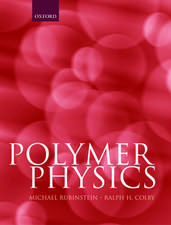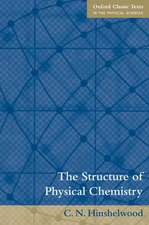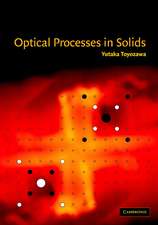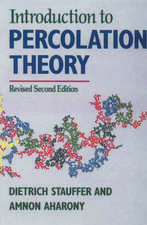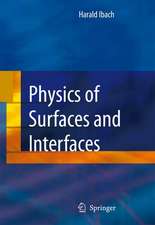Relaxation of the Chemical Bond: Skin Chemisorption Size Matter ZTP Mechanics H2O Myths: Springer Series in Chemical Physics, cartea 108
Autor Chang Q Sunen Limba Engleză Hardback – 27 mar 2014
| Toate formatele și edițiile | Preț | Express |
|---|---|---|
| Paperback (1) | 1242.35 lei 43-57 zile | |
| Springer Nature Singapore – 30 apr 2017 | 1242.35 lei 43-57 zile | |
| Hardback (1) | 1249.00 lei 43-57 zile | |
| Springer Nature Singapore – 27 mar 2014 | 1249.00 lei 43-57 zile |
Din seria Springer Series in Chemical Physics
- 20%
 Preț: 585.30 lei
Preț: 585.30 lei - 15%
 Preț: 643.00 lei
Preț: 643.00 lei - 15%
 Preț: 635.96 lei
Preț: 635.96 lei - 18%
 Preț: 953.03 lei
Preț: 953.03 lei - 15%
 Preț: 644.63 lei
Preț: 644.63 lei - 15%
 Preț: 638.43 lei
Preț: 638.43 lei - 15%
 Preț: 649.22 lei
Preț: 649.22 lei - 15%
 Preț: 647.40 lei
Preț: 647.40 lei - 15%
 Preț: 638.89 lei
Preț: 638.89 lei - 15%
 Preț: 652.31 lei
Preț: 652.31 lei - 15%
 Preț: 638.43 lei
Preț: 638.43 lei - 15%
 Preț: 637.13 lei
Preț: 637.13 lei - 18%
 Preț: 952.57 lei
Preț: 952.57 lei - 18%
 Preț: 947.85 lei
Preț: 947.85 lei - 15%
 Preț: 636.45 lei
Preț: 636.45 lei - 15%
 Preț: 649.87 lei
Preț: 649.87 lei - 18%
 Preț: 953.65 lei
Preț: 953.65 lei - 18%
 Preț: 894.03 lei
Preț: 894.03 lei - 15%
 Preț: 647.27 lei
Preț: 647.27 lei - 15%
 Preț: 646.30 lei
Preț: 646.30 lei - 18%
 Preț: 954.14 lei
Preț: 954.14 lei - 24%
 Preț: 1226.82 lei
Preț: 1226.82 lei - 18%
 Preț: 961.72 lei
Preț: 961.72 lei - 18%
 Preț: 1002.31 lei
Preț: 1002.31 lei - 24%
 Preț: 647.25 lei
Preț: 647.25 lei - 18%
 Preț: 888.49 lei
Preț: 888.49 lei - 18%
 Preț: 908.04 lei
Preț: 908.04 lei - 15%
 Preț: 641.38 lei
Preț: 641.38 lei - 15%
 Preț: 585.40 lei
Preț: 585.40 lei - 15%
 Preț: 639.90 lei
Preț: 639.90 lei - 18%
 Preț: 897.02 lei
Preț: 897.02 lei
Preț: 1249.00 lei
Preț vechi: 1523.16 lei
-18% Nou
Puncte Express: 1874
Preț estimativ în valută:
239.07€ • 259.77$ • 200.95£
239.07€ • 259.77$ • 200.95£
Carte tipărită la comandă
Livrare economică 21 aprilie-05 mai
Preluare comenzi: 021 569.72.76
Specificații
ISBN-13: 9789814585200
ISBN-10: 9814585203
Pagini: 840
Ilustrații: XXXII, 807 p. 258 illus., 182 illus. in color.
Dimensiuni: 155 x 235 x 50 mm
Greutate: 1.34 kg
Ediția:2014
Editura: Springer Nature Singapore
Colecția Springer
Seria Springer Series in Chemical Physics
Locul publicării:Singapore, Singapore
ISBN-10: 9814585203
Pagini: 840
Ilustrații: XXXII, 807 p. 258 illus., 182 illus. in color.
Dimensiuni: 155 x 235 x 50 mm
Greutate: 1.34 kg
Ediția:2014
Editura: Springer Nature Singapore
Colecția Springer
Seria Springer Series in Chemical Physics
Locul publicării:Singapore, Singapore
Public țintă
ResearchCuprins
From the Contents: Part I Molecular Chemisorption.- Introduction.- Foundations.- STM and LEED: Atomic Valences and Bond Geometry.- Part II Atomic Undercoordination.- Introduction.- Principles: BOLS and NEP.- Surface Relaxation and Nanosolid Densification.- Part III Mechano and Thermo Activation.- Introduction.- Principles.- Liquid and Solid Surfaces.- Part IV Water and Ice.- Introduction.- Principles: Hypotheses and Expectations.
Notă biografică
Dr. Chang Q Sun received a BSc in 1982 from Wuhan University of Science and Technology and an MSc in 1987 from Tianjin University, China. He completed his PhD in 1997 at Murdoch University, Australia and then joined Nanyang Technological University in 1997 as a faculty up to date.
His original contributions to the advancement of coordination bond and electronic engineering with multiple breakthroughs include: 1) bond-band-barrier (3B) correlation for C, N, O chemisorption 3B dynamics; 2) hydrogen-bond asymmetric relaxation & H2O anomalies; 3) bond-order-length-strength (BOLS) correlation for the physical chemistry of defect, surface and nanosolid; 4) nonbonding electron polarization (NEP) at undercoordinated sites; 5) local-bond-average approach for solid meso-mechano-thermo dynamics; 6) BOLS-TB algorithm for edge states discrimination; 7) zone-selective photoelectron spectroscopic (ZPS) purification of bonds & electrons associated with undercoordinated defect and surface atoms and hetero-coordinated interfaces; 8) Raman quantification of the length, energy, compressibility, Debye temperature, force constant & relaxation dynamics of bonds; 9) STM/S/VLEED quantification of 4-stage Cu3O2 bonding kinetics; & 10) functional materials devise, etc.
Dr. Sun has published over 250 principally-authored journal articles, 4 book chapters, 4 patents and 10 themed reports in Surface Science Reports, Chemical Reviews, Progress in Materials Science and Progress in Solid State Chemistry. etc. His BOLS theory has been adopted as teaching materials by institutes in multiple nations. He was conferred the First Laureate of the 25th Khwarizmi International Science Award in 2012 and the Inaugural Nanyang Award of Research in 2005. He was elected as Fellow of the Royal Society of Chemistry (FRSC, 2006) and the Institute of Physics (FInstP, 2007). He is currently on the Editorial Advisory Board for 8 journals and holding honorary appointments at multiple institutions.
His original contributions to the advancement of coordination bond and electronic engineering with multiple breakthroughs include: 1) bond-band-barrier (3B) correlation for C, N, O chemisorption 3B dynamics; 2) hydrogen-bond asymmetric relaxation & H2O anomalies; 3) bond-order-length-strength (BOLS) correlation for the physical chemistry of defect, surface and nanosolid; 4) nonbonding electron polarization (NEP) at undercoordinated sites; 5) local-bond-average approach for solid meso-mechano-thermo dynamics; 6) BOLS-TB algorithm for edge states discrimination; 7) zone-selective photoelectron spectroscopic (ZPS) purification of bonds & electrons associated with undercoordinated defect and surface atoms and hetero-coordinated interfaces; 8) Raman quantification of the length, energy, compressibility, Debye temperature, force constant & relaxation dynamics of bonds; 9) STM/S/VLEED quantification of 4-stage Cu3O2 bonding kinetics; & 10) functional materials devise, etc.
Dr. Sun has published over 250 principally-authored journal articles, 4 book chapters, 4 patents and 10 themed reports in Surface Science Reports, Chemical Reviews, Progress in Materials Science and Progress in Solid State Chemistry. etc. His BOLS theory has been adopted as teaching materials by institutes in multiple nations. He was conferred the First Laureate of the 25th Khwarizmi International Science Award in 2012 and the Inaugural Nanyang Award of Research in 2005. He was elected as Fellow of the Royal Society of Chemistry (FRSC, 2006) and the Institute of Physics (FInstP, 2007). He is currently on the Editorial Advisory Board for 8 journals and holding honorary appointments at multiple institutions.
Textul de pe ultima copertă
The aim of this book is to explore the detectable properties of a material to the parameters of bond and non-bond involved and to clarify the interdependence of various properties. This book is composed of four parts; Part I deals with the formation and relaxation dynamics of bond and non-bond during chemisorptions with uncovering of the correlation among the chemical bond, energy band, and surface potential barrier (3B) during reactions; Part II is focused on the relaxation of bonds between atoms with fewer neighbors than the ideal in bulk with unraveling of the bond order-length-strength (BOLS) correlation mechanism, which clarifies the nature difference between nanostructures and bulk of the same substance; Part III deals with the relaxation dynamics of bond under heating and compressing with revealing of rules on the temperature-resolved elastic and plastic properties of low-dimensional materials; Part IV is focused on the asymmetric relaxation dynamics of the hydrogen bond (O:H-O) and the anomalous behavior of water and ice under cooling, compressing, and clustering. The target audience for this book includes scientists, engineers and practitioners in the area of surface science and nanoscience.
Caracteristici
Features the latest advancement and future trends in surface and nanoscience Reinforces principles with a systematic and in depth approaches from basics to applications Correlates macroscopic properties to bonding parameters of a substance with combination of theory, experimental and computational techniques Written by a leading expert in the field Includes supplementary material: sn.pub/extras

